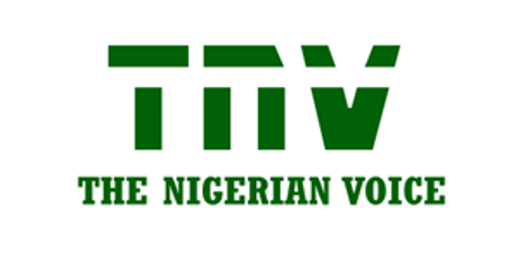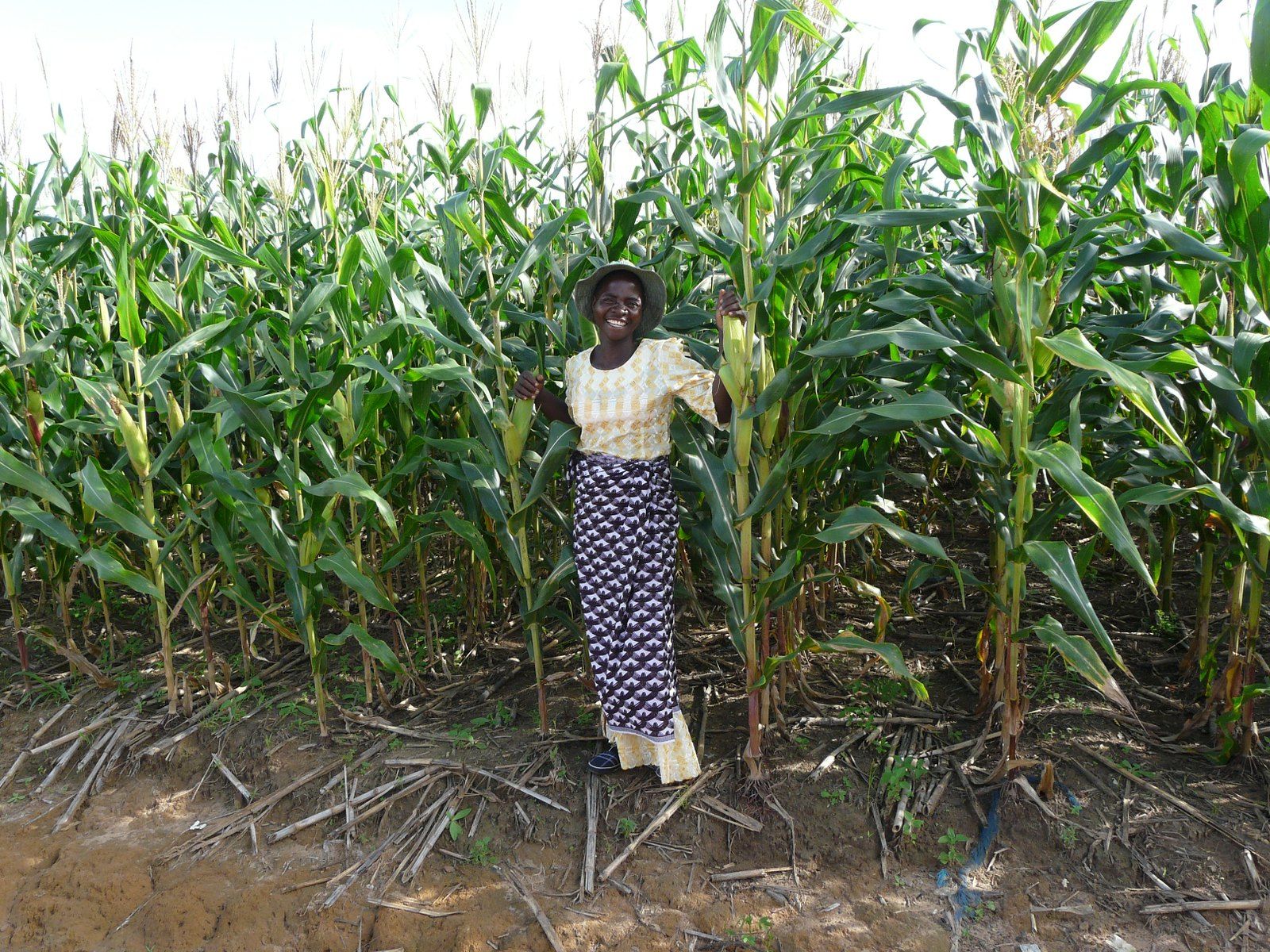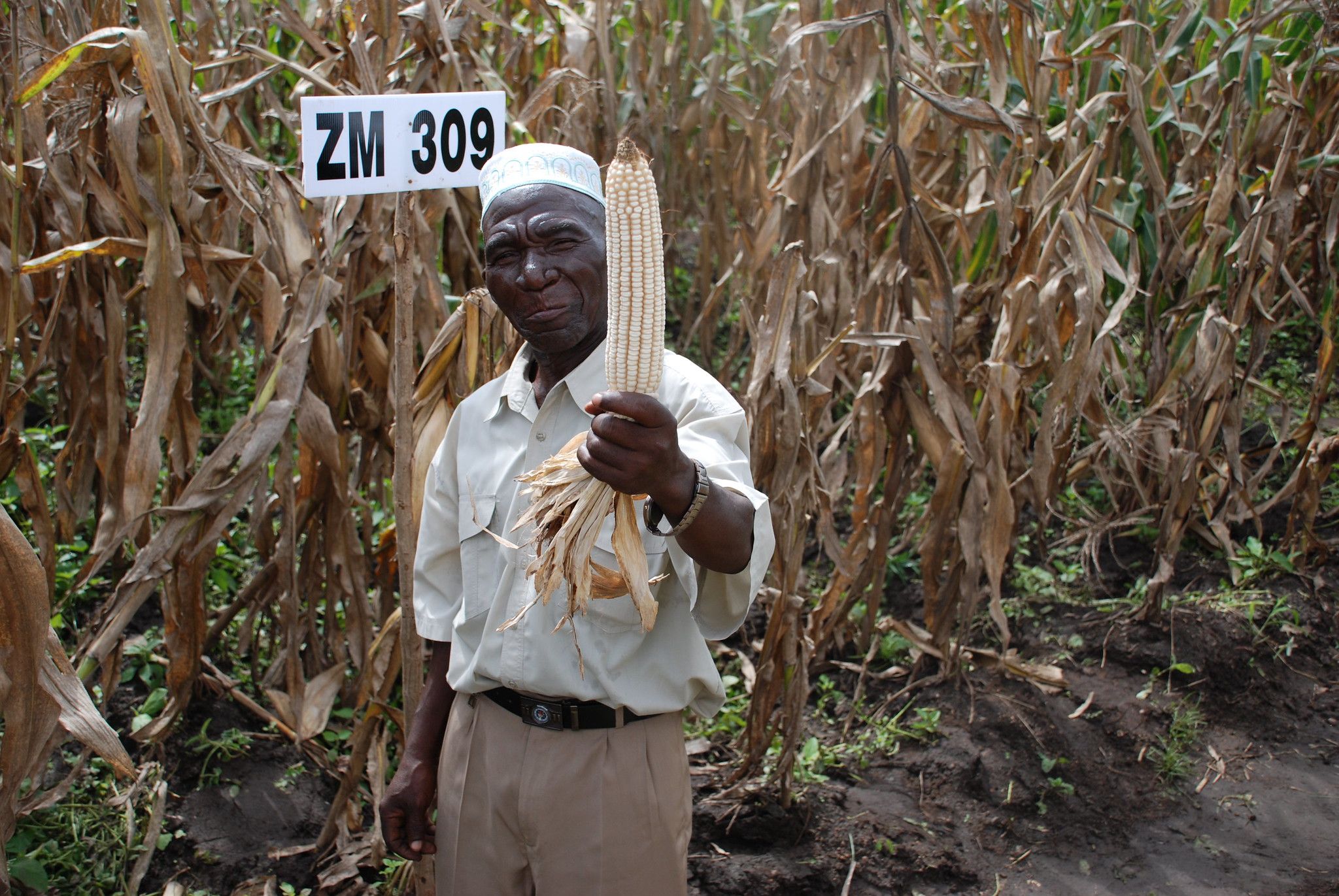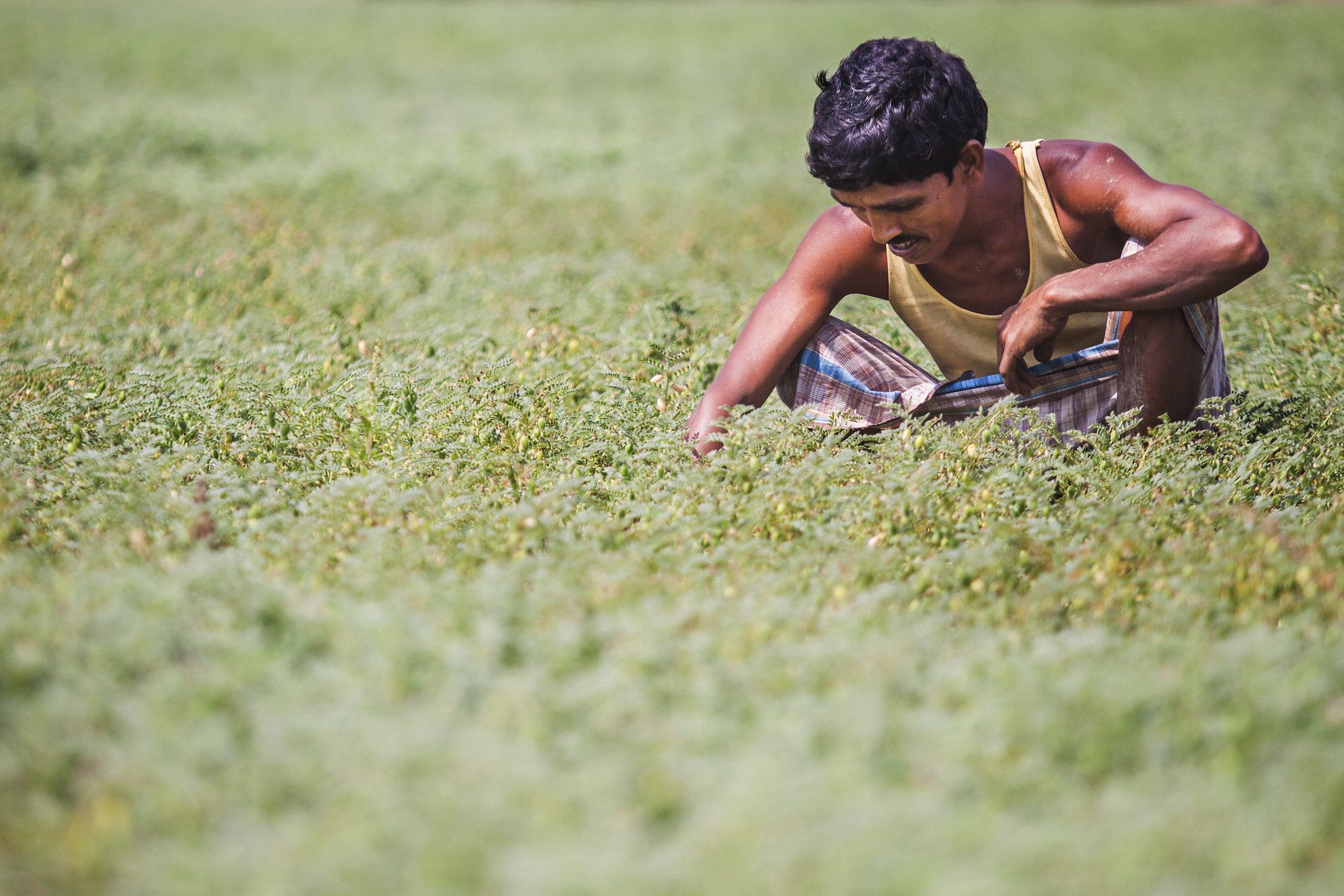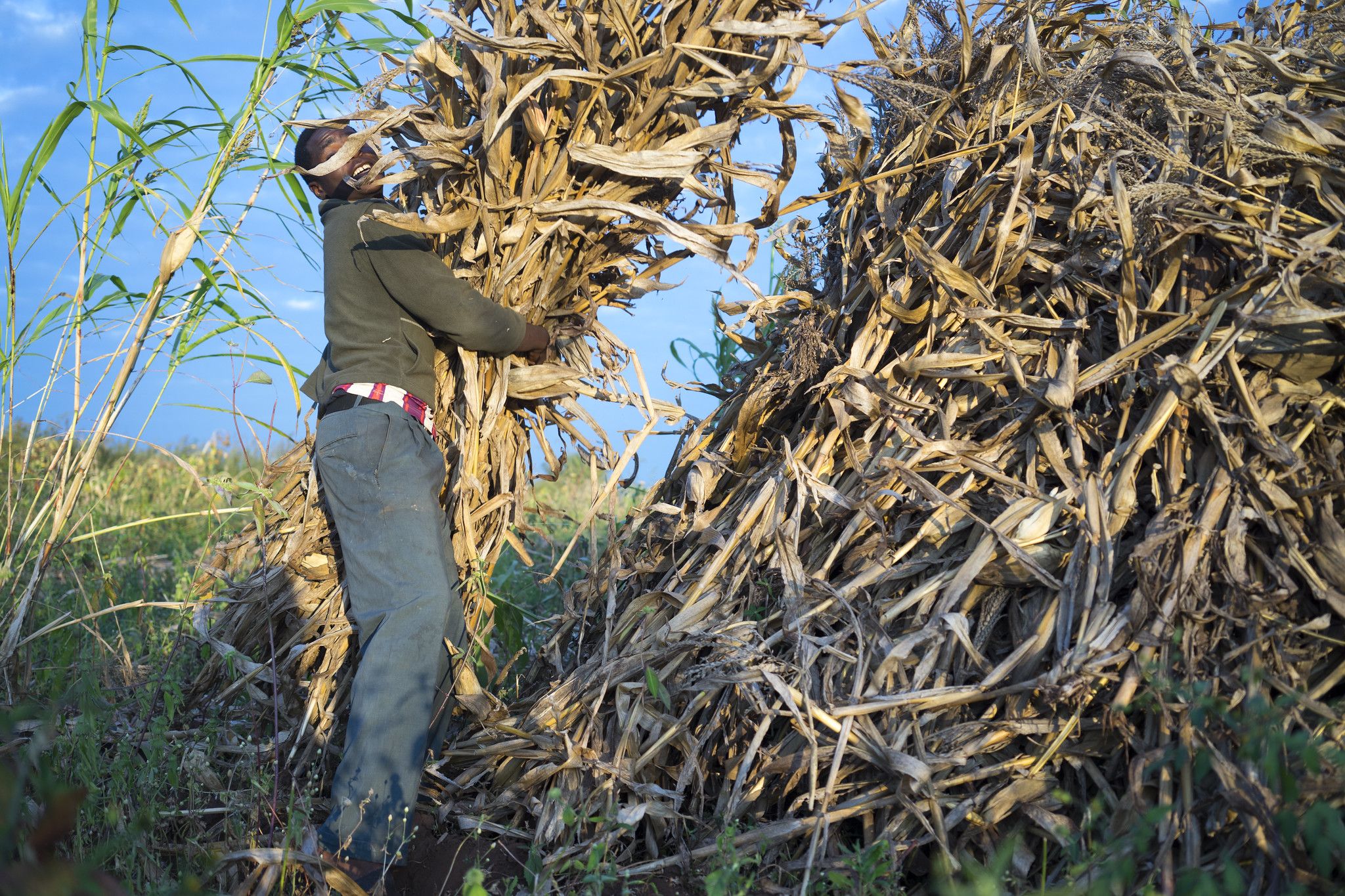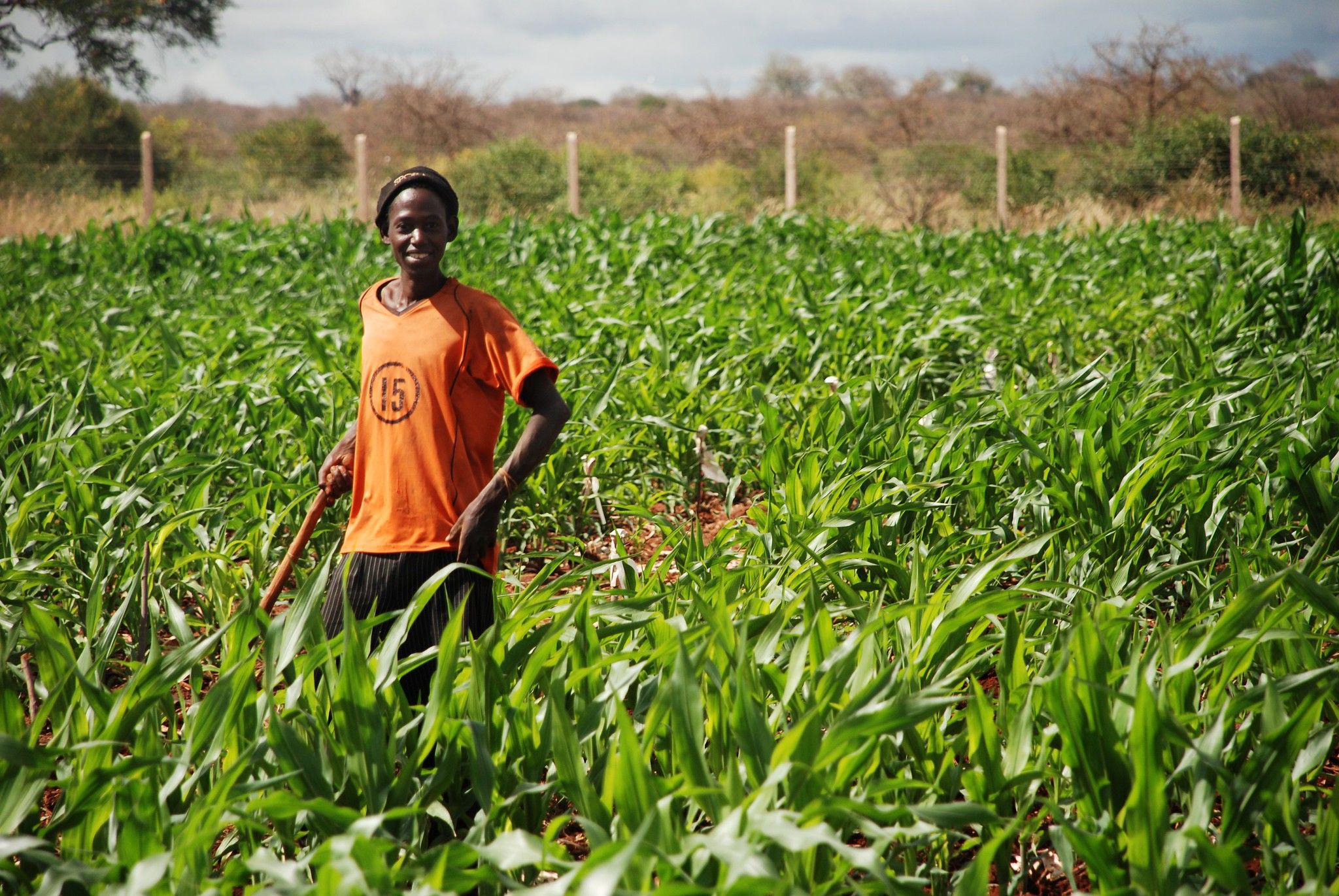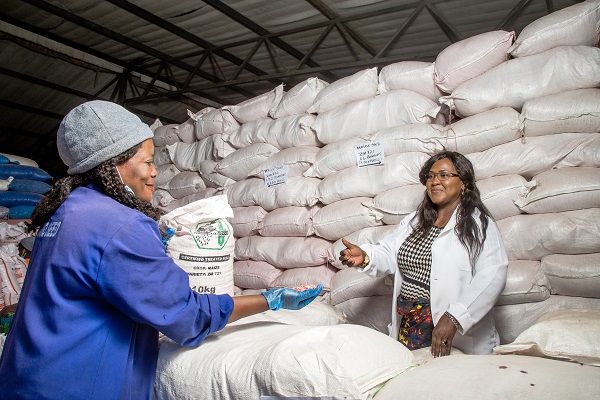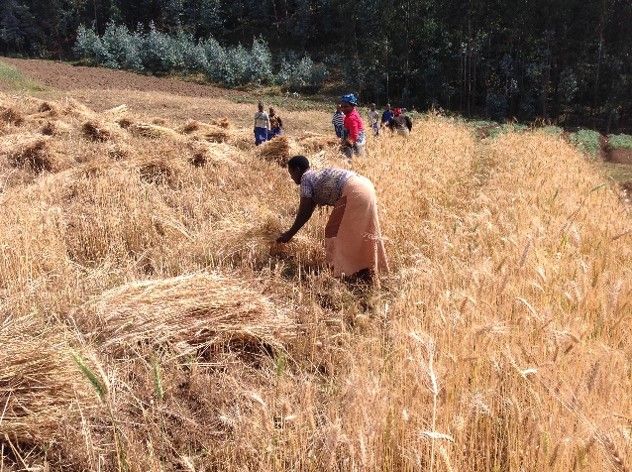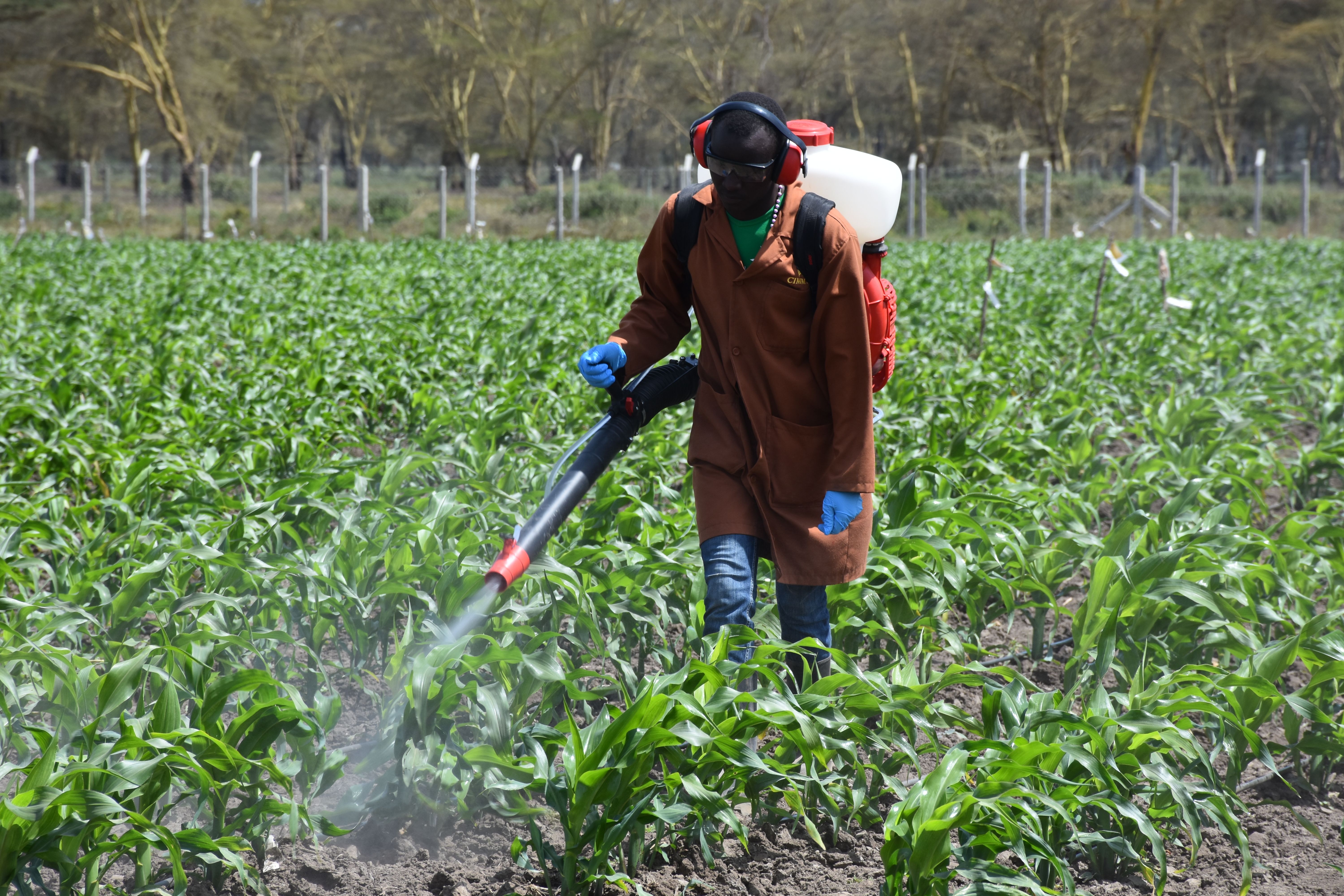Location: Zambia
Improved Maize for African Soils (IMAS)
African maize farmers must deal with drought, weeds, and pests, but their problems start with degraded, nutrient-starved soils and their inability to purchase enough nitrogen fertilizer. Maize yields of smallholder farmers in sub-Saharan Africa are a fraction of those in the developed world, due mainly to the region’s poor soils and farmers’ limited access to fertilizer or improved maize seed. On average, such farmers apply only 9 kilograms of fertilizer per hectare of cropland. Of that small amount, often less than half is captured by the crop; the rest is leached deep into the soil where plants cannot recover it or otherwise lost.
The Improved Maize for African Soils Project (IMAS) develops maize varieties that are better at capturing the small amount of fertilizer that African farmers can afford, and that use the nitrogen they take up more efficiently to produce grain. Project participants will use cutting-edge biotechnology tools such as molecular markers—DNA “signposts” for traits of interest—and transgenic approaches to develop varieties that ultimately yield 30 to 50 percent more than currently available varieties, with the same amount of nitrogen fertilizer applied or when grown on poorer soils.
The varieties developed will be made available royalty-free to seed companies that sell to the region’s smallholder farmers, meaning that the seed will become available to farmers at the same cost as other types of improved maize seed.
In four years or less, African farmers should have access to IMAS varieties developed using conventional breeding that offer a 20 percent yield advantage over current varieties. Improved varieties developed using DNA marker techniques are expected to be introduced within seven to nine years, and those containing transgenic traits are expected to be available in approximately 10 years, pending product performance and regulatory approvals by national regulatory and scientific authorities, according to the established laws and regulatory procedures in each country.
IMAS is being led by CIMMYT and funded with $19.5 million in grants from the Bill & Melinda Gates Foundation and the U.S. Agency for International Development. The project’s other partners — DuPont-Pioneer, Kenya Agricultural Livestock and Research Organization and the Agricultural Research Council of South Africa — are also providing significant in-kind contributions including staff, infrastructure, seed, traits, technology, training, and know-how.
The second phase of IMAS continues to be implemented through the Seed Production Technology for Africa (SPTA) project.
OBJECTIVES
- Conventional and marker assisted breeding to develop hybrids and OPVs with improved nitrogen use efficiency (NUE) adapted to southern and eastern Africa
- Identification and deployment of native trait alleles to enhance yield under low nitrogen conditions through association mapping and Quantitative Trait Loci mapping
- Development of transgenic maize varieties adapted to southern and eastern Africa with increased yield under severe nitrogen limitation
- Managing NUE varieties for sustainability in African maize cropping systems
- Project stewardship, public awareness and capacity building
- NUE variety registration, release and dissemination in southern and eastern Africa
Water Efficient Maize for Africa (WEMA)
The Water Efficient Maize for Africa partnership was launched in March 2008 to help farmers manage the risk of drought by developing and deploying maize varieties that yield 24 to 35 percent more grain under moderate drought conditions than currently available varieties. The higher and more reliable harvests will help farmers to feed their families and increase their incomes.
The varieties are being developed using conventional breeding, marker-assisted breeding, and biotechnology, and will be marketed royalty-free to smallholder farmers in Sub-Saharan Africa through African seed companies. The current, second phase of the project (2013–2017) includes breeding for resistance to stem borers—insect pests that seriously damage maize crops in the field—as well as product and production management, promotion with seed companies and farmers, and product stewardship activities.
The project focuses on Kenya, Mozambique, South Africa, Tanzania, Uganda, Zambia and Zimbabwe. The second phase of the project began on February 1, 2013.
OBJECTIVES
- Product development. Develop and test drought tolerant and and insect-pest resistant maize varieties through conventional, molecular, and genetic engineering breeding approaches.
- Regulatory affairs and compliance. Support multi-location testing and commercial release of drought tolerant and insect-pest resistant maize hybrids in the Water Efficient Maize for Africa partner countries.
- Product deployment: Product and production management. Facilitate the marketing and stewardship of drought tolerant and insect-pest resistant hybrid maize seeds, and stimulate private sector investments for sustainable seed production, distribution and us
- Communications and outreach. Support testing, dissemination, commercialization, adoption, and stewardship of conventional and transgenic drought tolerant and insect-pest resistant hybrids in the five target countries.
- Legal and licensing support. Develop and implement appropriate licensing and intellectual property protection mechanisms for Water Efficient Maize for Africa products.
FUNDING INSTITUTIONS
- Bill & Melinda Gates Foundation
- Howard G. Buffett Foundation
- U.S. Agency for International Development
PRINCIPAL COORDINATOR
Maize Lethal Necrosis Diagnostics and Prevention of Seed Transmission
This four-year Maize Lethal Necrosis Diagnostics and Prevention of Seed Transmission project will coordinate regional efforts to strengthen response to the rapid emergence and spread of Maize Lethal Necrosis (MLN).
Coordinated by CIMMYT, it will establish a community of practice among national plant protection organizations in eastern Africa for implementing harmonized MLN diagnostic protocols for detecting MLN-causing viruses and enable commercial seed companies to implement necessary standard operational procedures to produce MLN-free clean seed at various points along the maize seed value chain. It will also step-up MLN surveillance and monitoring in Malawi, Zambia and Zimbabwe, three of the major commercial maize seed exporting countries in sub-Saharan Africa.
The MLN project will be implemented in close partnership with the Alliance for a Green Revolution in Africa, the African Agricultural Technology Foundation, national plant protection organizations and commercial seed companies in eastern Africa. It will also pool expertise from relevant public- and private-sector partners, regional organizations, and seed trade organizations operating in the region.
Partners: The Alliance for a Green Revolution in Africa, the African Agricultural Technology Foundation, national plant protection organizations and commercial seed companies in eastern Africa
Sustainable Intensification of Maize-Legume Systems for Food Security in Eastern and Southern Africa (SIMLESA)
The Sustainable Intensification of Maize-Legume Systems for Food Security in Eastern and Southern Africa (SIMLESA) program aims to improve maize and legume productivity by 30 percent and to reduce the expected downside yield risk by 30 percent on approximately on approximately 650,000 farm households by 2023. Launched in 2010, the focal countries of program research are Australia, Botswana, Burundi, Ethiopia, Kenya, Malawi, Mozambique, Tanzania, South Sudan, Uganda, Rwanda, Zambia and Zimbabwe.
The main thrust of the SIMLESA program is increasing farm-level food security, productivity and incomes through promotion of maize-legume intercropping systems in the context of reduced climate risk and change.
The program has also laid the foundation for developing conservation agriculture based sustainable intensification options, including integration of improved maize and legume varieties identified for their compatibility with CA-based practices; promoting technology adoption by both female and male farmers; capacity building for national agricultural research systems of partner countries; creating enhanced partnerships and collaboration with established innovation platforms for coordinated scaling-out of SIMLESA-generated options and practices.
Funding Institutions: Australian Centre for International Agricultural Research (ACIAR)
Partners: National agricultural systems of Ethiopia, Kenya, Malawi, Mozambique and Tanzania, as well as international and local research centers, extension agencies, non-governmental organizations, universities and agribusinesses along the value chain.
Stress Tolerant Maize for Africa (STMA)
The Stress Tolerant Maize for Africa (STMA) project aims to diminish devastating constraints in maize production across sub-Saharan Africa. The project develops improved maize varieties with resistance and tolerance to drought, low soil fertility, heat, diseases such as Maize Lethal Necrosis and pests affecting maize production areas in the region.
STMA operates in eastern (Ethiopia, Kenya, Tanzania, Uganda), southern (Malawi, South Africa, Zambia, Zimbabwe) and West Africa (Benin, Ghana, Mali, Nigeria). These countries account for nearly 72 percent of all maize area in sub-Saharan Africa and include more than 176 million people who depend on maize-based agriculture for their food security and economic well-being. Climate change effects like drought, a lack of access to resources like fertilizer and other stresses increase the risk of crop failure that negatively affects income, food security and nutrition of millions of smallholder farmers and their families.
The project will develop 70 new stress-tolerant varieties using innovative modern breeding technologies, and promote improved stress-tolerant varieties expected to increase maize productivity up to 50 percent. The project aims to produce estimated 54,000 tons of certified seed to put into the hands of more than 5.4 million smallholder farmer households by the end of 2019.
Objectives
- Use innovative breeding tools and techniques applied for increasing the rate of genetic gain in the maize breeding pipeline.
- Increase commercialization of improved multiple-stress-tolerant maize varieties with gender-preferred traits by the sub-Saharan African seed sector.
- Increase seed availability and farmer uptake of stress-tolerant maize varieties in target countries.
- Optimize investment impact through effective project oversight, monitoring, evaluation and communication.
Drought Tolerant Maize for Africa (DTMA)
The Drought Tolerant Maize for Africa project aims to mitigate drought and other constraints to maize production in sub-Saharan Africa, increasing maize yields by at least one ton per hectare under moderate drought and with a 20 to 30 percent increase over farmers’ current yields, benefiting up to 40 million people in 13 African countries. The project brings together farmers, research institutions, extension specialists, seed producers, farmer community organizations and non-governmental organizations. It is jointly implemented by CIMMYT and the International Institute for Tropical Agriculture, in close collaboration with national agricultural research systems in participating nations. Millions of farmers in the region are already benefiting from the outputs of this partnership, which includes support and training for African seed producers and promoting vibrant, competitive seed markets.
Achievements:
- Between 2007 and 12, participants marketed or otherwise made available 60 drought tolerant hybrids and 57 open-pollinated varieties to smallholder farmers
- In addition to drought tolerance, the new varieties and hybrids also possess such desirable traits as resistance to major diseases
- Engage government officials in policy dialogue to help fast-track varietal releases and fosters competitive seed markets and more
widespread access to quality seed at affordable prices - Help ensure farmers’ access to the best possible products and services, coordinate various capacity-building events and
activities for maize breeders, technicians, seed producers, extension workers, non-government organizations and farmer groups - Provide technical and advisory support to 50 African undergraduate and 28 African graduate students
- Expand smallholder farmers’ use of drought and other stress tolerant maize seed to benefit 30 to 40 million people and provide added grain worth $160-200 million each year in drought-affected areas of sub-Saharan Africa
Principal coordinator
Tsedeke Abate
International Women’s Day 2019: Women in seed systems in Africa
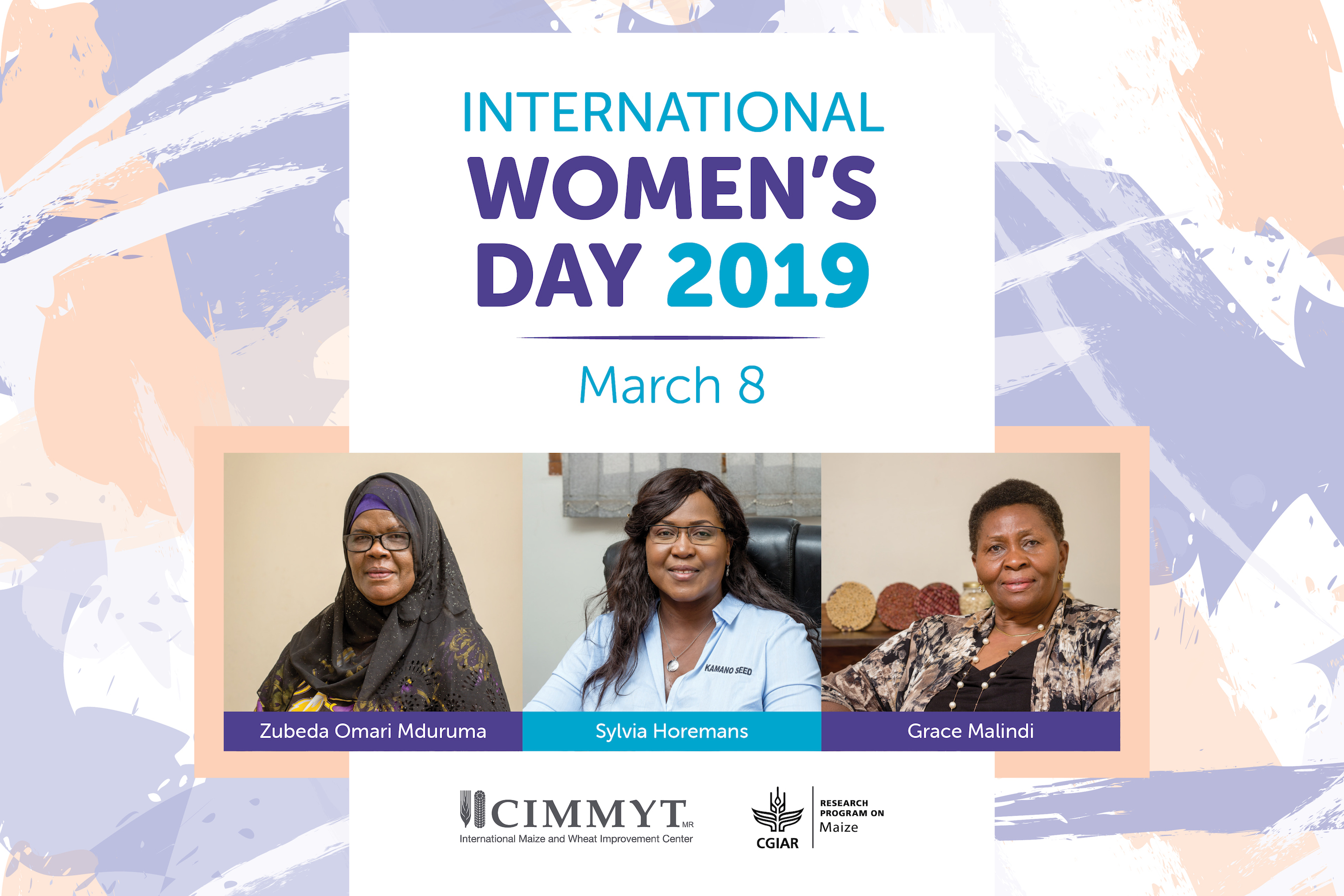
The maize seed sector in eastern and southern Africa is male-dominated. Most seed companies operating in the region are owned and run by men. Access to land and financial capital can often be a constraint for women who are keen on investing in agriculture and agribusiness. However, there are women working in this sector, breaking social barriers, making a contribution to improving household nutrition and livelihoods by providing jobs and improved seed varieties.
The Gender team within the International Maize and Wheat Improvement Center’s (CIMMYT) Socioeconomics Program conducted interviews with women owners of seed companies in eastern and southern Africa. They shared information on their background, their motivation to start their businesses, what sets their companies apart from the competition, the innovative approaches they use to ensure smallholder farmers adopt improved seed varieties, the unique challenges they face as women in the seed sector and the potential for growth of their companies. The resulting stories will be published as a report in May 2019.
These women in leading roles serve as mentors and examples to both male and female employees. In honor of International Women’s Day, held March 8, 2019, CIMMYT would like to share some of their stories to recognize these women — and many others like them — and the important work they do in seed systems in Africa.
Sylvia Horemans
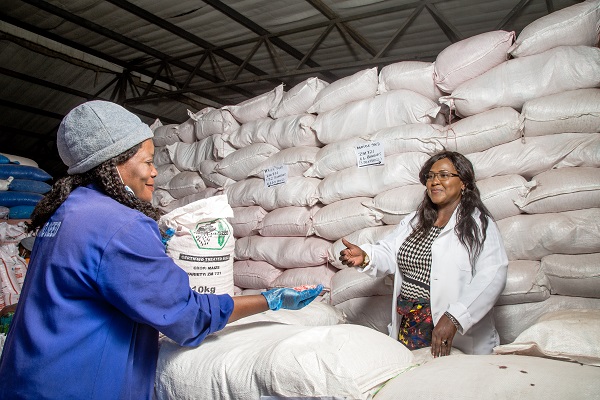
Sylvia Horemans started Kamano Seeds in April 2004 together with her late husband Desire Horemans. The company derives its name from a stream that runs through their farm in Mwinilinga, Zambia. Kamano means a stream that never dries, aptly describing the growth the company has enjoyed over the years, enabling it to capture 15 percent of the country’s seed market share. Sylvia became the company’s Chief Executive Officer in 2016.
“The initial business was only to sell commercial products but we realized there was a high demand for seed so we decided to start our own seed business,” says Sylvia. “We work with cooperatives which identify ideal farmers to participate in seed production.”
The company takes pride in the growth they have witnessed in their contract workers. “Most farmers we started with [now] have 20 to 40 hectares. Some are businessmen and have opened agrodealer shops where they sell agricultural inputs,” Sylvia announced.
Kamano prides itself in improving the lives of women smallholders and involving women in decision-making structures. “We empower a lot of women in agriculture through our out-grower scheme,” says Sylvia. She makes a deliberate effort to recruit women farmers, ensuring they receive payment for their seeds. “We pay the women who did the work and not their husbands.”
To read the full story, please click here.
Zubeda Mduruma
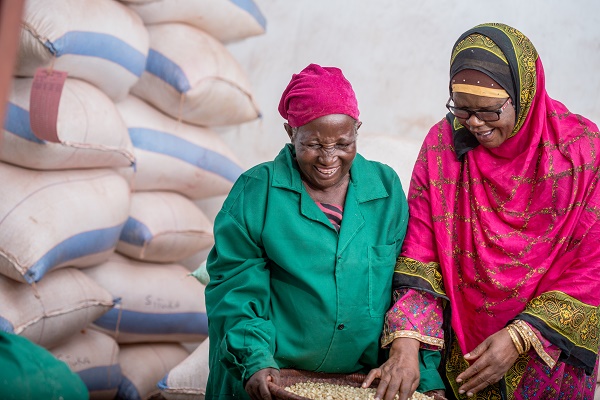
Zubeda Mduruma, 65, is a plant breeder. She took to agriculture from a young age, as she enjoyed helping her parents in the family farm. After high school, Zubeda obtained a bachelor’s degree in Agriculture. Then she joined Tanzania’s national agriculture research system, working at the Ilonga Agricultural Research Institute (ARI-Ilonga) station. She then pursued her master’s in Plant Breeding and Biometry from Cornell University in the United Stations and obtained a doctorate in Plant Breeding at Sokoine University of Agriculture in Tanzania, while working and raising her family. “I wanted to be in research, so I could breed materials which would be superior than what farmers were using, because they were getting very low yields,” says Zubeda. In the 22 years she was at Ilonga, Zubeda was able to release 15 varieties.
Aminata Quality Seeds is a family business that was registered in 2008, owned by Zubeda, her husband and their four daughters. Aminata entered the seed market as an out-grower, producing seed for local companies for two years. The company started its own seed production in 2010, and the following year it was marketing improved varieties. “I decided to start a company along the Coast and impart my knowledge on improved technologies, so farmers can get quality crops for increased incomes,” says Zubeda.
Zubeda encourages more women to venture into the seed business. “To do any business, you have to have guts. It is not the money; it is the interest. When you have the interest, you will always look for ways on how to start your seed business.”
To read the full story, please click here.
Grace Malindi
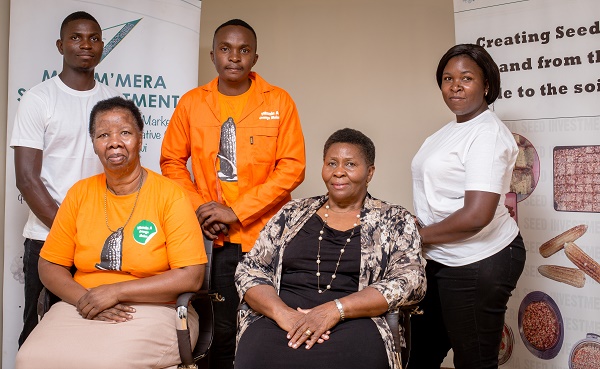
Grace Malindi, 67, started Mgom’mera in Malawi in 2014 with her sister Florence Kahumbe, who had experience in running agrodealer shops. Florence was key in setting up the business, particularly through engagement with agro-dealers, while Grace’s background in extension was valuable in understanding their market. Grace has a doctoral degree in Human and Community Development with a double minor in Gender and International Development and Agriculture Extension and Advisory from the University of Illinois Urbana-Champaign in the United States. Mgom’mera is a family-owned enterprise. Grace’s three children are involved in the business, serving as directors.
Mgom’mera distinguishes itself from other seed companies because of its focus on maize varieties that have additional nutritive value. The company uses the tagline “Creating seed demand from the table to the soil.” It educates farmers not only on how to plant the seed they sell, but also on how to prepare nutritious dishes with their harvest. The company stocks ZM623, a drought-tolerant open-pollinated variety, and Chitedze 2, a quality protein maize. In the 2019 maize season it will also sell MH39, a pro-vitamin A variety. In addition, they are looking forward to beginning quality protein maize hybrid production in the near future, having started the process of acquiring materials from CIMMYT.
Grace observes that women entrepreneurs are late entrants in seed business. “You need agility, flexibility and experience to run a seed business and with time you will improve,” says Grace, advising women who may be interested in venturing into this male-dominated business.
To read the full story, please click here.
Smallholder wheat production can cut Africa’s costly grain imports
International scientists are working with regional and national partners in sub-Saharan Africa to catalyze local wheat farming and help meet the rapidly rising regional demand for this crop.
The specialists are focusing on smallholder farmers in Rwanda and Zambia, offering them technical and institutional support, better links to markets, and the sharing of successful practices across regions and borders, as part of the project “Enhancing smallholder wheat productivity through sustainable intensification of wheat-based farming systems in Rwanda and Zambia.”
“Work started in 2016 and has included varietal selection, seed multiplication, and sharing of high-yielding, locally adapted, disease-resistant wheat varieties,” said Moti Jaleta, a socioeconomist at the International Maize and Wheat Improvement Center (CIMMYT) who leads the project. “Our knowledge and successes in smallholder wheat production and marketing will also be applicable in Madagascar, Mozambique, and Tanzania.”
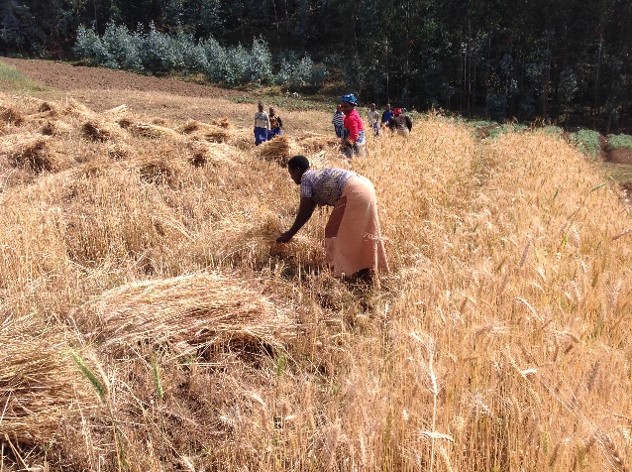
Maize is by far the number-one food crop in sub-Saharan Africa but wheat consumption is increasing fast, driven in part by rapid urbanization and life-style changes. The region annually imports more than 15 million tons of wheat grain, worth some US$ 3.6 billion at current prices. Only Ethiopia, Kenya, and South Africa grow significant amounts of wheat and they are still net importers of the grain.
“Growing more wheat where it makes sense to do so can help safeguard food security for people who prefer wheat and reduce dependence on risky wheat grain markets,” Jaleta explained. “We’re working in areas where there’s biophysical potential for the crop in rain-fed farming, to increase domestic wheat production and productivity through use of improved varieties and cropping practices.”
In addition to the above, participants are supporting the region’s wheat production in diverse ways:
- Recommendations to fine-tune smallholder wheat value chains and better serve diverse farmers.
- Testing of yield-enhancing farming practices, such as bed-and-furrow systems that facilitate efficient sowing and better weed control.
- Testing and promotion of small-scale mechanization, such as power tillers, to save labor and improve sowing and crop establishment.
- Exploring use of hand-held light sensors to precisely calibrate nitrogen fertilizer dosages throughout the cropping season.
Innocent Habarurema, wheat breeder in the Rwanda Agriculture and Animal Resources Development Board (RAB), cited recent successes in the release of improved, disease resistant wheat varieties, as well as engaging smallholder farmers in seed multiplication and marketing to improve their access to quality seed of those varieties.
“The main challenge in wheat production is the short window of time between wheat seasons, which doesn’t allow complete drying of harvested plants for proper threshing,” Habarurema explained. “Suitable machinery to dry and thresh the wheat would remove the drudgery of hand threshing and improve the quality of the grain, so that it fetches better prices in markets.”
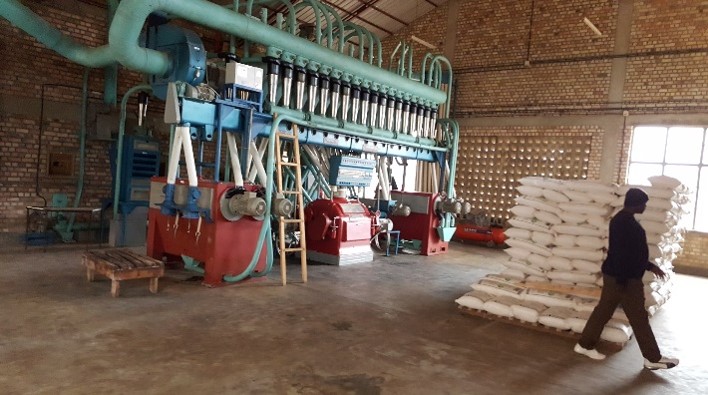
Critical wheat diseases in Zambia include spot blotch, a leaf disease caused by the fungus Cochliobolus sativus, and head blight caused by Fusarium spp., which can leave carcinogenic toxins in the grain, according to Batiseba Tembo, wheat breeder at the Zambian Agricultural Research Institute (ZARI).
“Developing and disseminating varieties resistant to these diseases is a priority in the wheat breeding program at Mt. Makulu Agricultural Research Center,” said Tembo. “We’re also promoting appropriate mechanization for smallholder farmers, to improve wheat production and reduce the enormous drudgery of preparing the soil with hand hoes.”
Participants in the project, which runs to 2020, met at Musanze, in Rwanda’s Northern Province, during February 5-7 to review progress and plan remaining activities, which include more widespread sharing of seed, improved practices, and other useful outcomes.
“There was interest in trying smallholder winter wheat production under irrigation in Zambia to reduce the disease effects normally experienced in rainfed cropping,” said Jaleta, adding that the costs and benefits of irrigation, which is rarely used in the region, need to be assessed.
Project participants may also include in selection trials wheat varieties that have been bred to contain enhanced grain levels of zinc, a key micronutrient missing in the diets of many rural Africa households.
“The project will also push for the fast-track release and seed multiplication of the best varieties, to get them into farmers’ hands as quickly as possible,” Jaleta said.
In addition to CIMMYT, RAB, and ZARI, implementing partners include the Center for Coordination of Agricultural Research and Development for Southern Africa (CCARDESA). Generous funding for the work comes from the International Fund for Agricultural Development (IFAD) and the CGIAR Research Program on Wheat.
Christian Thierfelder
Christian Thierfelder is a Principal Cropping Systems Agronomist working with CIMMYT’s Sustainable Intensification program.
Since 2009, Thierfelder has led CIMMYT’s conservation agriculture systems research in Southern Africa with the aim to adapt conservation agriculture systems to the needs and environments of smallholder farmers. He currently focuses on fine-tuning conservation agriculture systems to different agro-ecologies and researching farmers’ adoption of new technologies, green manure cover crops and grain legumes integration into maize-based farming systems, climate-smart agriculture, GxExM and agro-ecological management of the fall armyworm.
His research mainly covers Malawi, Zambia and Zimbabwe, and to a lesser extent Namibia. Thierfelder works with a wide range of national and international partners from research and extension in all target countries. Capacity building is a central part of his work, which includes farmers, extension officers and national researchers but also university students from all degree levels.
New Publications: Storage of maize products results in vitamin loss

Biofortification of crops through traditional breeding techniques has become very common in the fight against malnutrition globally. Biofortified provitamin A maize is bred to produce increased carotenoids (a naturally occurring molecule also found in carrots) to reduce vitamin A deficiency (VAD). VAD affects 190 million children globally and causes an estimated 500,000 cases of preventable blindness per year. A study in 2014 showed that provitamin A maize, was as effective as a high-dose supplement at increasing vitamin A stores in Zambian children.
However, processing and storage can drastically reduce the level of carotenoids in these foods by the time they are consumed. The authors of a new study explain that processing of maize grains makes vitamins more bioavailable, but that exposure to heat, light and air can oxidize carotenoids, reducing the amount remaining in food.
The study shows that when stored for six months in traditional conditions, up to 65 percent of provitamin A may be lost, but it differs among maize varieties, with some varieties losing 40 percent of their carotenoid content in the first two weeks.
The study also examined processing and cooking methods of biofortified maize and eggs from hens who ate this maize to find the best and worst conditions for carotenoid retention. They found that boiling whole grain maize into porridge had the best retention rates of any tested processing methods, with retention rates over 100 percent, and deep frying maize and scrambling eggs had the lowest retention rates of around 70 and 80 percent, respectively.
Overall, the authors say cooking allowed both maize and eggs to retain upwards of 80 percent of effects carotenoid content, but storage at or above room temperature quickly degraded the carotenoid content. They suggest that whole grain and courser ground maize may be a good way to retain more provitamin A while sitting on a shelf, but say more research is necessary.
Read the full study “Retention of Carotenoids in Biofortified Maize Flour and β-Cryptoxanthin-Enhanced Eggs after Household Cooking” and check out other publications by CIMMYT staff below:
- A white paper on global wheat health based on scenario development and analysis. Savary, S., Djurle, A., Yuen, J., Ficke, A., Rossi, V., Esker, P.D., Fernandes, J.M.C., Del Ponte, E.M., Kumar, J., Madden, L.V., Paul, P., McRoberts, N., Singh, P.K., Huber, L., Pope de Vallavielle, C., Saint-Jea, S., Willocquet, L. In: Phytopathology v. 107, no. 10, p. 1109-1122.
- Characterization of leaf rust and stripe rust resistance in spring wheat ‘Chilero’. Ponce-Molina, L.J., Huerta-Espino, J., Singh, R.P., Basnet, B.R., Alvarado Beltrán, G., Randhawa, M.S., Caixia Lan, Aguilar Rincón, V.H., Lobato-Ortiz, R., García Zavala, J.J. In: Plant disease v. 102, no. 2, p. 421-427.
- Evaluation of grain yield of heat stress resilient maize hybrids in Nepal. Koirala, K.B., Giri, Y.P., Rijal, T.R., Zaidi, P.H., Ajanahalli, R.S., Shrestha, J. In: International Journal of Applied Sciences and Biotechnology v. 5, no. 4, p. 511-522.
- Genetic analysis of heat adaptive traits in tropical maize (Zea mays L.). Krishnaji Jodage., Kuchanur, P.H., Zaidi, P.H., Patil, A., Seetharam, K., Vinayan, M.T., Arunkumar, B. In: International Journal of Current Microbiology and Applied Sciences v. 7, no. 1, p. 3237-3246.
- Genetic analysis of morpho-physiological traits and yield components in F2 partial diallel crosses of bread wheat (Triticum aestivum L.). Abidine Fellah, Z.E., Hannach, A., Bouzerzour, H., Dreisigacker, S., Yahyaoui, A.H., Sehgal, D. In: Revista Facultad Nacional de Agronomía v. 70, no. 3, p. 8237-8250.
- Genomics selection in plant breeding : methods, models, and perspectives. Crossa, J., Pérez-Rodríguez, P., Cuevas, J., Montesinos-Lopez, O.A., Jarquín, D., De los Campos, G., Burgueño, J., Camacho-González, J. M., Perez-Elizalde, S., Beyene, Y., Dreisigacker, S., Ravi Gopal Singh, Zhang, X., Gowda, M., Roorkiwal, M., Rutkoski, J., Varshney, R. K. In: Trends in Plant Science v. 20, no. 11, p. 961-975.
- Grain yield and stability of white early maize hybrids in the highland valleys of Mexico. Torres Flores, J. L., Mendoza García, B., Prasanna, B.M., Alvarado Beltrán, G., San Vicente, F.M., Crossa, J. In: Crop Science v. 57, no. 6, p. 3002-3015.
- High-throughput measurement methodologies for developing nutrient-dense crops. Guild, G., Parkes, E., Nutti, M., Palacios-Rojas, N., Stangoulis, J. In: African Journal of Food, Agriculture, Nutrition and Development v. 17, no. 2, p. 11941-11954.
- Retention of carotenoids in biofortified maize flour and β-Cryptoxanthin-Enhanced eggs after household cooking. Sowa, M., Jiaoying Yu, Palacios-Rojas, N., Goltz, S. R., Howe, J. A., Davis, C.R., Rocheford, T., Tanumihardjo, S. A. In: ACS Omega no. 2, p. 7320-7328.
- Risk assessment and spread of the potentially invasive Ceratitis rosa Karsch and Ceratitis quilicii De Meyer, Mwatawala and Virgilio sp. Nov. using life-cycle simulation models : implications for phytosanitary measures and management. Tanga, C. M., Khamis, F. M., Tonnang, H., Rwomushana, I., Mosomtai, G., Mohamed, S. A., Ekesi, S. In: PLoS One v. 13, no. 1:e0189138

Climate insurance for farmers: a shield that boosts innovation

What stands between a smallholder farmer and a bag of climate-adapted seeds? In many cases, it’s the hesitation to take a risk. Farmers may want to use improved varieties, invest in new tools, or diversify what they grow, but they need reassurance that their investments and hard work will not be squandered.
Climate change already threatens crops and livestock; one unfortunately-timed dry spell or flash flood can mean losing everything. Today, innovative insurance products are tipping the balance in farmers’ favor. That’s why insurance is featured as one of 10 innovations for climate action in agriculture, in a new report released ahead of next week’s UN Climate Talks. These innovations are drawn from decades of agricultural research for development by CGIAR and its partners and showcase an array of integrated solutions that can transform the food system.
Index insurance is making a difference to farmers at the frontlines of climate change. It is an essential building block for adapting our global food system and helping farmers thrive in a changing climate. Taken together with other innovations like stress-tolerant crop varieties, climate-informed advisories for farmers, and creative business and financial models, index insurance shows tremendous promise.
The concept is simple. To start with, farmers who are covered can recoup their losses if (for example) rainfall or average yield falls above or below a pre-specified threshold or ‘index’. This is a leap forward compared to the costly and slow process of manually verifying the damage and loss in each farmer’s field. In India, scientists from the International Water Management Institute (IWMI) and the Indian Council of Agricultural Research (ICAR), have worked out the water level thresholds that could spell disaster for rice farmers if exceeded. Combining 35 years of observed rainfall and other data, with high-resolution satellite images of actual flooding, scientists and insurers can accurately gauge the extent of flooding and crop loss to quickly determine who gets payouts.
The core feature of index insurance is to offer a lifeline to farmers, so they can shield themselves from the very worst effects of climate change. But that’s not all. Together with my team, we’re investigating how insurance can help farmers adopt new and improved varieties. Scientists are very good at developing technologies but farmers are not always willing to make the leap. This is one of the most important challenges that we grapple with. What we’ve found has amazed us: buying insurance can help farmers overcome uncertainty and give them the confidence to invest in new innovations and approaches. This is critical for climate change adaptation. We’re also finding that creditors are more willing to lend to insured farmers and that insurance can stimulate entrepreneurship and innovation. Ultimately, insurance can help break poverty traps, by encouraging a transformation in farming.
Insurers at the cutting edge are making it easy for farmers to get coverage. In Kenya, insurance is being bundled into bags of maize seeds, in a scheme led by ACRE Africa. Farmers pay a small premium when buying the seeds and each bag contains a scratch card with a code, which farmers text to ACRE at the time of planting. This initiates coverage against drought for the next 21 days; participating farms are monitored using satellite imagery. If there are enough days without rain, a farmer gets paid instantly via their mobile phone.

Farmers everywhere are businesspeople who seek to increase yields and profits while minimizing risk and losses. As such, insurance has widespread appeal. We’ve seen successful initiatives grow rapidly in India, China, Zambia, Kenya and Mexico, which points to significant potential in other countries and contexts. The farmers most likely to benefit from index insurance are emergent and commercial farmers, as they are more likely than subsistence smallholder farmers to purchase insurance on a continual basis.
It’s time for more investment in index insurance and other innovations that can help farmers adapt to climate change. Countries have overwhelmingly prioritized climate actions in the agriculture sector, and sustained support is now needed to help them meet the goals set out in the Paris Climate Agreement.
Jon Hellin leads the project on weather index-based agricultural insurance as part of the CGIAR Research Program on Climate Change, Agriculture and Food Security (CCAFS). This work is done in collaboration with the International Research Institute for Climate and Society (IRI) at Columbia University, and the CGIAR Research Programs on MAIZE and WHEAT.
Find out more
Report: 10 innovations for climate action in agriculture
Video: Jon Hellin on crop-index insurance for smallholder farmers
Report: Scaling up index insurance for smallholder farmers: Recent evidence and insights.
Website: Weather-related agricultural insurance products and programs – CGIAR Research Program on Climate Change, Agriculture and Food Security (CCAFS)
New online portal offers information to curb maize lethal necrosis in Africa
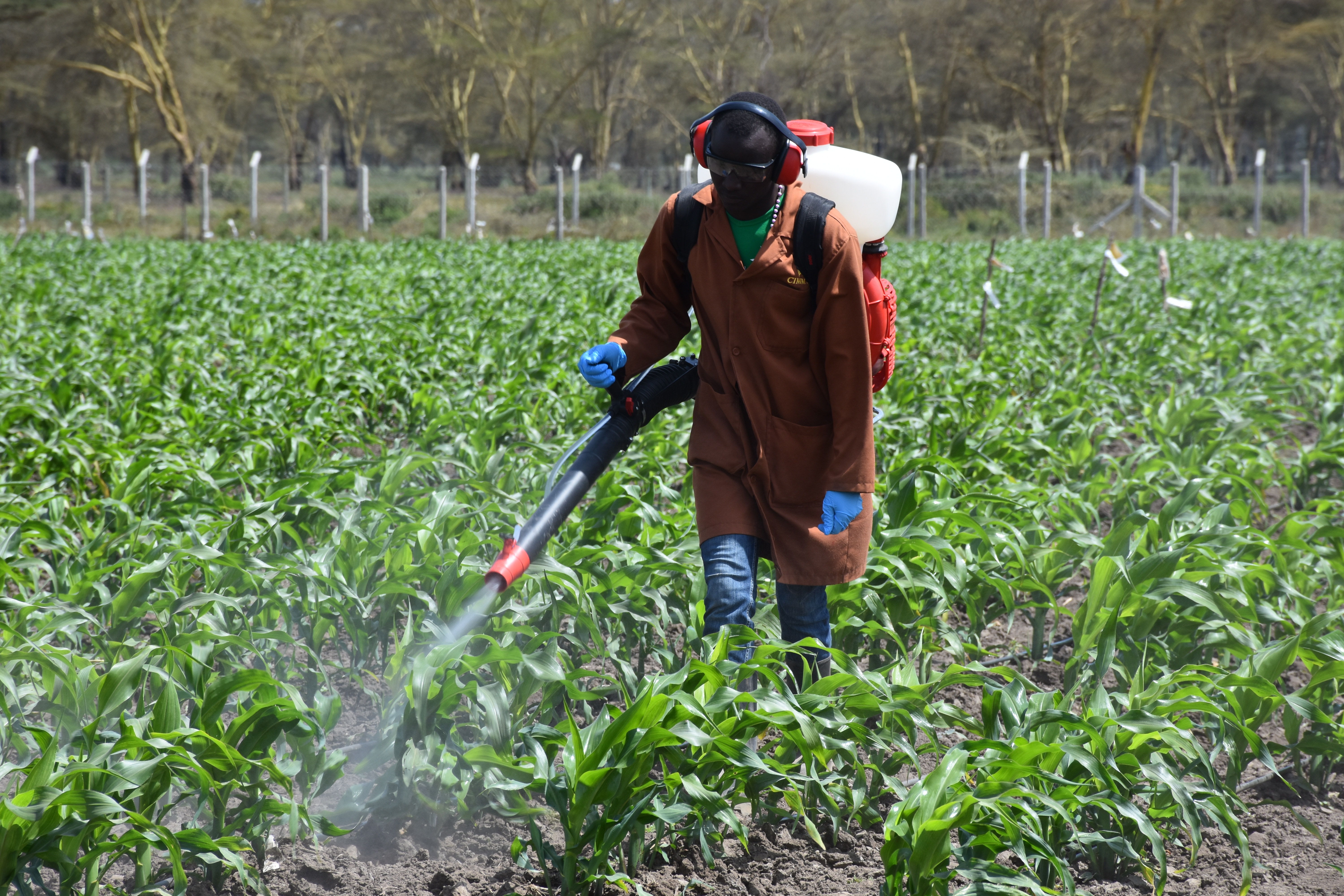
The new maize lethal necrosis (MLN) online portal provides up-to-date information and surveillance tools to help researchers control and stop the spread of the deadly disease.
MLN was first reported in Kenya in 2011 and has since then been reported in several countries in eastern Africa, especially the Democratic Republic of the Congo, Ethiopia, Kenya, Rwanda, Tanzania and Uganda. The disease kills plants before they can grow, and the pathogens are transmitted by insects or contaminated seed. Serious damage to the region’s maize production from MLN has impacted household food security.
The online portal, found at mln.cimmyt.org, details the spread of MLN, where the disease has been managed and controlled, and how to identify it in the field. It also provides key MLN publications, surveillance software, MLN incidence maps, information on the MLN Screening Facility, and MLN-tolerant hybrids that are either released or in pipeline.
One tool on the portal is the MLN surveillance and monitoring system that provides real-time data to identify the presence and spread of the disease across five endemic countries in eastern Africa, and three selected non-endemic countries in southern Africa. The system was developed by scientists collaborating with the International Maize and Wheat Improvement Center (CIMMYT), with support from the United States Agency for International Development (USAID).
In 2016, MLN surveillance was successfully conducted in Malawi, Zambia and Zimbabwe – three major seed producing countries in Africa – and the data is presented in the portal, detailing MLN’s status across 652 surveyed maize fields. Future data gathered in other affected countries will also be uploaded to the portal as surveillance teams conduct fieldwork using Global Positioning System online survey tools, to assess the spread and severity of the disease in these countries. Ongoing surveillance in endemic countries allows stakeholders to see real-time updates on the spread of MLN.
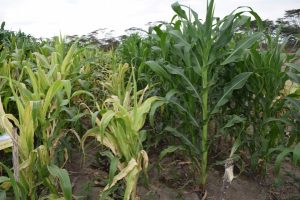
Since the disease was first reported, collaborative efforts have resulted in the establishment of a MLN Screening Facility at the Kenya Agricultural & Livestock Research Organization (KALRO) center at Naivasha in 2013. The facility, managed by CIMMYT, has so far screened nearly 100,000 maize germplasm entries — 56 percent from CIMMYT — against MLN under artificial inoculation over the last four years.
Nine CIMMYT-derived MLN-tolerant hybrids have been already released in three countries – seven in Kenya, one in Uganda and one in Tanzania. Eleven second generation hybrids are currently in national performance trials in these countries. Intensive efforts are currently being made by seed companies in Kenya, Tanzania and Uganda to expand the delivery of MLN-tolerant maize seed to the smallholders.
The MLN portal enables researchers to comprehensively assess the situation with regard to MLN, helps strengthen the national disease monitoring and diagnostic systems by providing faster and accurate data, and offers access to CIMMYT-offered MLN phenotyping services.
New Publications: Better post-harvest storage can raise vitamin A intake 25 percent in Zambia

EL BATAN, Mexico (CIMMYT) – Maize nutritionally enhanced with vitamin A can bring significant health benefits to deficient populations, but recent modeling studies in Zambia suggest that its impact is being cut short by the low retention of provitamin A carotenoids – a naturally occurring plant pigment also found in many orange foods that the body then converts into vitamin A – during storage and postharvest grain loss.
Up to 30 percent of grain is lost in African countries when maize is stored using common storage methods, such as artisanal silos or woven bags, due mostly to insect, rodent or fungi infestations and accumulation of poisonous chemical compounds called mycotoxins, which are produced by certain fungi.
A recent study evaluated the impact of carotenoid retention in orange maize using different storage methods to assess the most efficient way to store grain without losing vitamin A carotenoids. The researchers specifically evaluated how hammer and breakfast meal – the two most widely consumed grains in Zambia – age in metal silos, multilayer polyethylene and common woven bags, as well as single and multilayer polyethylene bags.
The researchers found significant differences between grain storage methods after 6 months of storage. Across all methods, hammer meal retained more carotenoid than breakfast meal after 4 months, though there was no difference in provitamin A carotenoid loss when using single and multilayer polyethylene bags.
Potential contribution of stored orange maize to the estimated average provitamin A requirement of children and women was around 25 percent – 26.5 and 24.3 percent for children and women, respectively – suggesting that orange maize meal can provide significant amounts of provitamin A to Zambian diets, even after 4 months of storage.
Read the full study “Carotenoid retention in biofortified maize using different post-harvest storage and packaging methods” and check out other recent publications from CIMMYT staff below.
- Economic benefits of climate-smart agricultural practices to smallholder farmers in the Indo-Gangetic Plains of India. 2016. Khatri-Chhetri, A., Aryal, J.P., Sapkota, T.B., Khurana, R. In: Current Science, v. 110, no. 7, p. 1251-1256.
- Effect of different mulching materials on maize growth and yield in conservation agriculture systems of sub-humid Zimbabwe. 2016. Mupangwa, W., Nyagumbo, I., Mutsamba, E.F. In: AIMS agriculture and food, v. 1, no. 1, p. 239-253.
- Effect of in situ moisture conservation practices on environmental, energetics and economic comparisons on maize + blackgram cropping system in dryland ecosystem. 2016. Jat, M.L., Balyan, J.K., Shalander Kumar, Dadhich, S.K. In: Annals of biology, v. 32, no. 2, p. 158-163.
- Effect of long-term tillage and diversified crop rotations on nutrient uptake, profitability and energetics of maize (Zea mays) in north-western India. 2016. Yadav, M.R., Parihar, C.M., Jat, S.L., Singh, A.K., Kumar, D., Pooniya, V., Parihar M.D., Saveipune, D., Parmar, H., Jat, M.L. In: Indian Journal of Agricultural Sciences, v. 86, no. 6, p. 743-749.
- Effectiveness and economics of hermetic bags for maize storage: results of a randomized controlled trial in Kenya. 2016. Ndegwa, M.K., De Groote, H., Gitonga, Z., Bruce, A.Y. In: Crop Protection, v. 90, p. 17-26.
- Carotenoid retention in biofortified maize using different post-harvest storage and packaging methods. 2017. Taleon, V., Mugode, L., Cabrera-Soto, L., Palacios-Rojas, N. In: Food chemistry, v. 232, p. 60-66.
- Characteristics of maize cultivars in Africa: How modern are they and how many do smallholder farmers grow? 2017. Tsedeke Abate, Fisher, M., Abdoulaye, T., Kassie, G., Lunduka, R., Marenya, P., Asnake, W. In: Agriculture and food security, v. 6, no. 30.
- CIMMYT Series on carbohydrates, wheat, grains, and health: carbohydrates, grains, and whole grains and disease prevention. Part IV. Cancer risk: lung, prostate, and stomach. 2017. Jones, J.M., Peña-Bautista, R.J., Korczack, R., Braun, H.J. In: Cereal Foods World, v. 62, no. 1, p. 12-22.
- CIMMYT Series on carbohydrates, wheat, grains, and health: carbohydrates and vitamins from grains and their relationships to mild cognitive impairment, Alzheimer’s disease, and Parkinson’s disease. 2017. Jones, J.M., Korczack, R., Peña-Bautista, R.J., Braun, H.J. In: Cereal Foods World, v. 62, no. 2, p. 65-75.
- Crossfire: ‘Private sector engagement in smallholder value chains’. 2017. Belt, J., Hellin, J. In: Practical Action Publishing, v. 28, no. 1-2.
New Publications: Study shows improved maize decreases malnutrition
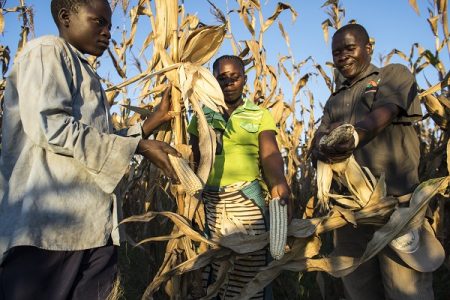
MEXICO CITY (CIMMY) – New evidence shows that not only do improved maize varieties increase crop productivity and farmer income, they can also decrease child malnutrition.
Malnutrition is the largest single factor contributing to the global disease and accounts for about 30 percent of infant deaths. Malnutrition is particularly widespread among children in Zambia, and is one of the leading contributors to the high burden of disease in the country. Around half of all Zambian children under the age of five are stunted, or too short for their age, indicating chronic malnutrition.
A recent Food Security study published by scientists at the International Maize and Wheat Improvement Center (CIMMYT) found that adoption of improved maize varieties significantly reduces the probability of stunting by an average of 26 percent in Zambian children.
The paper evaluated the impact of improved maize varieties with traits such as higher yields, early maturation and resistance to disease, on stunting in more than 800 households across eastern Zambia using an endogenous switching probit model to identify the determinants of child nutritional status and impact of improved maize varieties.
Researchers found that adoption of improved maize varieties held a key role in improving the income earning opportunities for rural households through increased maize yields. More maize – a staple of the Zambian diet – coupled with more money to spend on high calorie and protein foods led to a decline in malnutrition.
However, realizing the full benefits new technologies like improved maize can have on communities requires increased investment and policy support aimed at enhancing adoption by farmers, according to the study. Social dynamics and increasing education, especially among women, are particularly critical for promoting nutrition-enhancing child care practices, given that the probability of stunting was reduced by 16 percent with each additional year of schooling for the most educated female household member among adopters in the study.
Read the full study “Determinants of child nutritional status in the eastern province of Zambia: the role of improved maize varieties,” and check out more new publications from CIMMYT scientists below.
- Determinants of child nutritional status in the eastern province of Zambia: the role of improved maize varieties. 2016. Manda, J., Gardebroek, C., Khonje, M. G., Alene, A.D., Mutenje, M., Kassie, M. In: Food Security, vol. 8, no. 1, p. 239–253.
- Determinants of Crop Residue use along an intensification gradient in West Africa’s Savannah zones. 2016. Akinola, A. A., Abdoulaye, T., Valbuena, D., Erenstein, O., Amare Haileslassie, Germaine, I., Shehu, M., Ayedun, B. In: Tropicultura, vol. 34, no. 4, p. 396-410.
- Development and deployment of a portable field phenotyping platform. 2016. Crain, J.L., Yong Wei, Barker, J., Thompson, S.M., Alderman, P.D., Reynolds, M.P., Naiqian Zhang, Poland, J. In: Crop Science, vol. 56, p. 1-11.
- Development and Feasibility of innovative relay seeders for seeding wheat into standing cotton using a high clearance tractor in cotton-wheat system. 2016. Singh, M., Mahal, J.S., Sidhu, H.S., Manes, G.S., Jat, M.L., Singh, Y. In: Applied Engineering in Agriculture, vol. 32, no. 4, p. 341-352.
- Development and validation of KASP assays for genes underpinning key economic traits in bread wheat. 2016. Rasheed, A., Weie Wen, Fengmei Gao, Shengnan Zhai, Hui Jin, Jindong Liu, Qi Guo, Yingjun Zhang, Dreisigacker, S., Xianchun Xia, He Zhonghu. In: Theoretical and Applied Genetics, vol. 129, p. 1843-1860.
- The role of Hyalomma Truncatum on the dynamics of Rift Valley fever: insights from a mathematical epidemic model. 2017. Pedro, S.A., Abelman, S., Fisher, M., Tonnang, H., Mmbando, F., Friesen, D. In: Acta biotheoretica, vol.65, no.1, p.1-36.
- Use of genomic estimated breeding values results in rapid genetic gains for drought tolerance in maize. 2017. Vivek, B., Krishna, G., Vengadessan, V., Babu, R., Zaidi, P.H., Le Quy Kha, Mandal, S.S., Grudloyma, P., Takalkar, S., Krothapalli, K., Singh, I.S., Ocampo, E.T.M., Fan Xingming, Burgueño, J., Azrai, M., Singh, R.P., Crossa, J. In: The Plant Genome, vol. 10, no. 1, p. 1-8.
- Response to climate risks among smallholder farmers in Malawi: a multivariate probit assessment of the role of information, household demographics, and farm characteristics. 2017. Mulwa, C., Marenya, P.. Dil Bahadur Rahut. Kassie, M. In: Climate Risk Management, vol. 16, p. 208-221.
